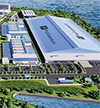Front Line: Is Reshoring Production the Answer to Supply Chain Woes?
In light of supply chain challenges post-pandemic, some manufacturers have decided to reshore their production, with varying results.
Q3 2022
The Reshoring Initiative recently reported reshoring and foreign direct investment announcements in 2021 added up to 261,000 jobs, up 46 percent from 2020.
According to Harry Moser, founder and president of the Reshoring Initiative, the pandemic helped increase reshoring by U.S. companies as shortages of personal protective equipment, electric vehicle batteries, semiconductors, and other essential items highlighted America's reliance on overseas producers.
Supply Chain Threats
“Corporations saw their delivery times from China going from a month to three or four months, and sometimes they never knew when they were going to get it.” Pandemic-related supply chain disruptions heightened corporations’ fear of future problems, such as geopolitical woes, including Russia’s Ukraine invasion, as well as “the risk of decoupling from China because of an incident over Taiwan,” Moser notes. “If nothing gets shipped out of China, or even all of Asia, companies could be out of business for six months or a year.”
If nothing gets shipped out of China, or even all of Asia, companies could be out of business for six months or a year Harry Moser, founder, the Reshoring Initiative The original off-shoring trend that began in the late 20th century was mostly driven by potential cost savings overseas. But companies have become more cognizant of other costs and risks, driving some to reshore, according to Moser.
Reshoring carries its own challenges and potential pitfalls, Moser says. He cited one furniture maker’s “homecoming” to Littleton, Colo., an undercapitalized venture that went bankrupt within a year. Another example was Otis Elevator's closure of a Mexican factory and 2012 move to South Carolina that failed due to supply chain delays and problems recruiting enough skilled workers.
Calculate All Costs
Successful reshoring requires plenty of advance planning and also “picking the right products” to manufacture stateside, Moser advises. Picking the right products means factoring all costs including factory price, duty fees, freight costs, and tariffs.
According to Robert Martichenko, a long-time strategic advisor and author/lecturer in the supply chain space, over the last two years, companies “learned from Covid. They realized they didn’t know where their suppliers were and that they didn’t understand the implications of lead time. All of a sudden, organizations needed more materials, more parts, and they had no idea lead times would be so long. But a global supply chain has zero flexibility,” says Martichenko, founder of a strategic initiative called Trailpaths.
All of a sudden, organizations needed more materials, more parts, and they had no idea lead times would be so long Robert Martichenko, advisor and author, supply chain issues Dual Sourcing
One way to reduce lead time is to have suppliers close to manufacturing facilities, though organizations are rethinking that, according to Martichenko.
One high-profile example of reshoring has been Stanley Black & Decker’s move to bring some of its manufacturing back to the U.S., with a new 425,000-square-foot plant in Fort Worth, Texas. In an interview with Supply Chain Management Review, Guru Bandekar, the company’s chief supply chain officer for global tools and storage, said SB&D has asked 20 of its suppliers to open factories in the U.S. and Mexico, and is doing something similar in other regions.
Reshoring is sometimes challenging for smaller companies who “don’t have scale.” But reshoring doesn’t have to be an all-or-nothing proposition, Martichenko points out. One solution is dual sourcing. “It might be possible to source half of what you were sourcing globally and then source another half from a domestic supplier, even if it costs more.”
Manufacturers sometimes think the cost to buy domestically is too high. But, “you need to really understand total costs,” and imported materials, he explained.
A company can also source goods from Mexico or Canada and still get the benefits of reshoring but at lower costs, Martichenko contends.
Project Announcements
Australia-Based Aquatic Leisure Technologies Group Plans Opp, Alabama, Manufacturing Operations
12/11/2025
Teradyne Plans Wixom, Michigan, Robotics Operations
12/11/2025
Robinson Plans Altoona, Iowa, Manufacturing Operations
12/11/2025
BioTouch Expands Columbus, Georgia, Operations
12/11/2025
Natrion Plans Erie County, New York, Battery Components Operations
12/11/2025
Czech-Based GZ PrintPak Expands Mount Pleasant, Wisconsin, Manufacturing Operations
12/11/2025
Most Read
-
The Workforce Bottleneck in America’s Manufacturing Revival
Q4 2025
-
Rethinking Local Governments Through Consolidation and Choice
Q3 2025
-
First Person: Filter King’s Expansion Playbook
Q3 2025
-
Lead with Facts, Land the Deal
Q3 2025
-
How Canada Stays Competitive
Q3 2025
-
Investors Seek Shelter in Food-Focused Real Estate
Q3 2025
-
America’s Aerospace Reboot
Q3 2025


